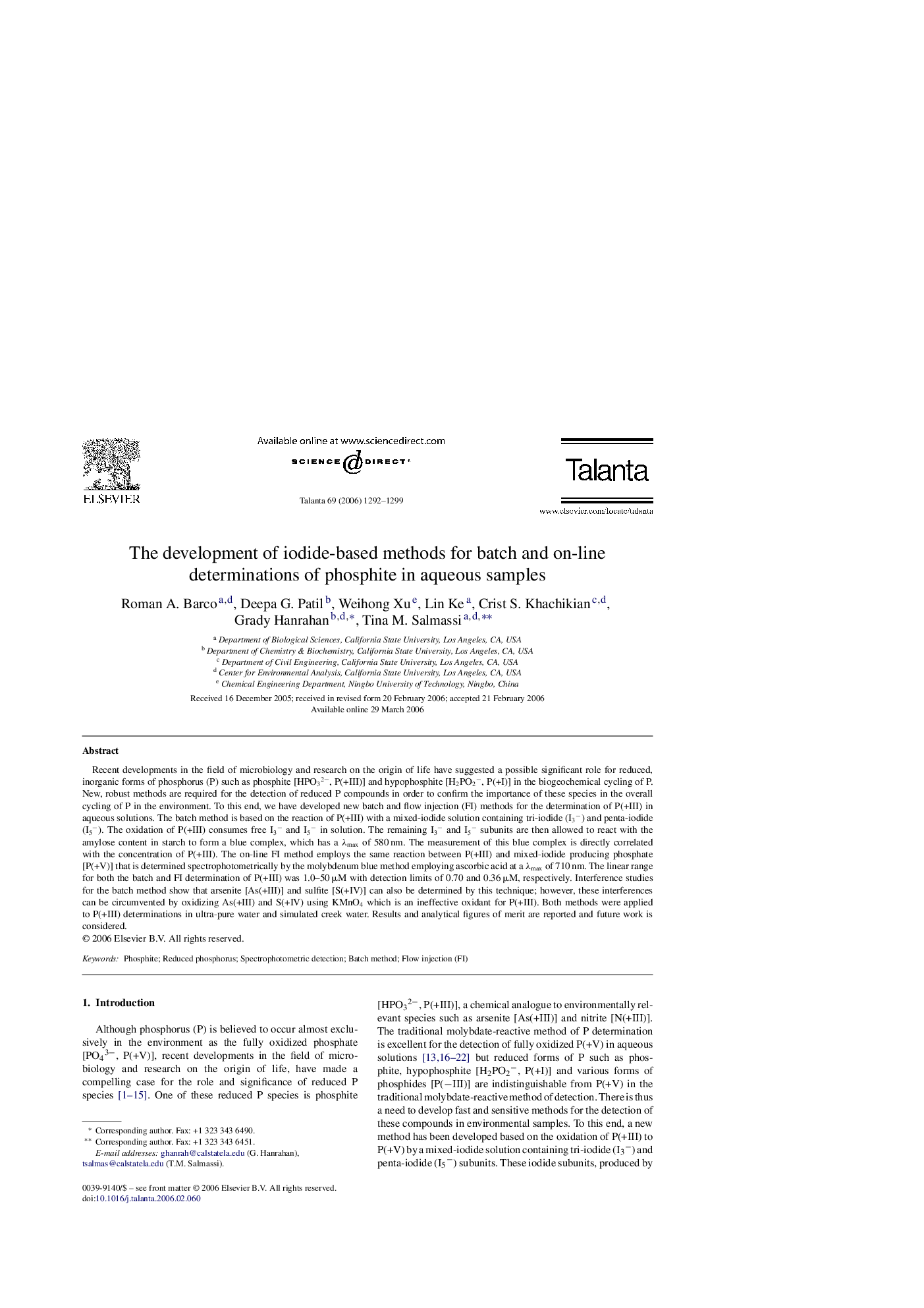| Article ID | Journal | Published Year | Pages | File Type |
|---|---|---|---|---|
| 1245706 | Talanta | 2006 | 8 Pages |
Recent developments in the field of microbiology and research on the origin of life have suggested a possible significant role for reduced, inorganic forms of phosphorus (P) such as phosphite [HPO32−, P(+III)] and hypophosphite [H2PO2−, P(+I)] in the biogeochemical cycling of P. New, robust methods are required for the detection of reduced P compounds in order to confirm the importance of these species in the overall cycling of P in the environment. To this end, we have developed new batch and flow injection (FI) methods for the determination of P(+III) in aqueous solutions. The batch method is based on the reaction of P(+III) with a mixed-iodide solution containing tri-iodide (I3−) and penta-iodide (I5−). The oxidation of P(+III) consumes free I3− and I5− in solution. The remaining I3− and I5− subunits are then allowed to react with the amylose content in starch to form a blue complex, which has a λmax of 580 nm. The measurement of this blue complex is directly correlated with the concentration of P(+III). The on-line FI method employs the same reaction between P(+III) and mixed-iodide producing phosphate [P(+V)] that is determined spectrophotometrically by the molybdenum blue method employing ascorbic acid at a λmax of 710 nm. The linear range for both the batch and FI determination of P(+III) was 1.0–50 μM with detection limits of 0.70 and 0.36 μM, respectively. Interference studies for the batch method show that arsenite [As(+III)] and sulfite [S(+IV)] can also be determined by this technique; however, these interferences can be circumvented by oxidizing As(+III) and S(+IV) using KMnO4 which is an ineffective oxidant for P(+III). Both methods were applied to P(+III) determinations in ultra-pure water and simulated creek water. Results and analytical figures of merit are reported and future work is considered.
